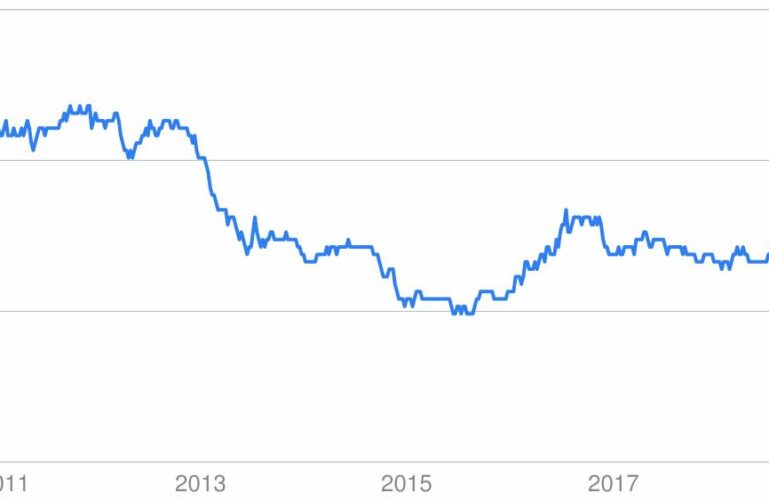Report on the Financial Risks Facing Alibaba
Name
Institution
Report on the Financial Risks Facing Alibaba
财务风险报告代写 Report on the Financial Risks Facing Alibaba:Alibaba Group Holding Limited is China’s and one of the largest online retail and ···
Description of Alibaba
Alibaba Group Holding Limited is China’s and one of the largest online retail and whole commercial companies. It was started on June 28, 1999 by a group of entrepreneurs led by Jack Ma (Guo et al., 2006). Alibaba has grown to have more than 600 million customers around the world and hosts millions of merchants and businesses. The company subsidiaries engage in online and mobile commerce through offering products, services and technology that enable merchants, brands and other businesses to transform the way they market, sell and operate in the People’s Republic of China (China) and internationally.
Alibaba’s core businesses include online retail and wholesale, cloud computing, mobile media and entertainment and other innovations. The company also participates in logistics and local services through its investors. The company has three main sites including Taobao, Tmall and Alibaba.com. The three websites serve to connect various types of buyers and sellers and functions as an intermediary in the emerging internet commerce. The Taobao Marketplace is an online commercial Chinese market destination operated by the company.
Tmall is a third-party platform where brands and retailers meet to conduct business. The company also operates 1688.com which is China domestic wholesale marketplace. AliExpress was established to target international and cross-border markets. Tmall Global is a platform within Tmall that is used by international retailers willing to enter China market without having physical shops in China and access wholesale global market through Alibaba.com. The company competes with Tencent and Baidu.
Exchange Rates of Major Trading Partners 财务风险报告代写
The currency exchange rates are determined by the balance of trade that affects the supply and demand for foreign exchange. According to Desai (2008), it is the role of every MNC to put up mechanisms for managing exchange rate changes. In an instance where the exports are not equal to exports, the is likelihood of more supply or demand for a country’s currency that ultimately influences the price of the currency on the world market. The price of one currency is quoted in relative terms, that is, it is described in terms of another. For instance, Yuan is expressed in terms of Dollars based on the prevailing market exchange rate.
Overall, exchange rates play important roles in Alibaba trading. Particularly, the devaluation of domestic makes exports cheaper and exporting firms benefits. However, those importing will face higher importation costs. On the other hand, appreciation of the domestic currency makes exports more expensive and hence their competitiveness is reduced in the local market. However, imports will be cheaper.
Alibaba Group operations are based in China and hence the main currency is Chinese Yuan. For the purpose of currency comparison and analysis, three main trade partners are selected including the United States, British, and Japan. The currencies for the U.S, Britain and Japan are U.S dollar (USD), euro (EUR) and Japanese yen (JPY) respectively. The impact of each of these currencies to Alibaba trading is examined separately.
United States Dollar 财务风险报告代写
China has held its currency steady for years from 1994 to 2004 (Frankel, 2006). The decision was meant to encourage exports of its products to other countries. The demand for exports is higher because of undervalued currency and low-priced domestic products. Due to pressure from international trade partners like the United States, China has since 2005 allowed the yuan to volatile at the market pace to just over six to dollar in 2018 as shown in figure 1 below. And in August 2019, the People’s Bank of China set yuan’s daily reference rate below seven to dollar first ever in over a decade in response to Trump’s new tariffs of 10% on $300 billion worth of Chinese imports (Karabell, 2019).
From 1999 to 2004, Alibaba has been enjoying the advantage of cheaper imports.
The exchange rates were set to fluctuate above 7 yuan per dollar. The company was able to sell products at cheaper price in the US market compared to other retailers. A weak yuan made Chinese exports cheaper and competitive in the international market. As a result, Alibaba becomes more competitive in the United States and other countries that used dollar in the international market. When yuan depreciate to dollar, it can be perceived as a strategy to offset the impact of higher tariffs on Chinese products to countries using dollar.
The low exchange rate for yuan to dollar has also made Chinese products around the world cheaper and affordable by many especially in developing countries in Africa. Its products from China have been cheaper on the company’s online retail and wholesale platform. Alibaba used the devalued yuan as the springboard enter the international market. 财务风险报告代写
Unfortunately, when the exchange rates of yuan to the dollar are high especially prior to 1996 to 2004, the imports from the United States and other countries that trade using U.S dollar were more expensive. Therefore, the company was not able to competitively sell imported products into the Chinese market. When yuan exchange rate to dollar was reduced to below 7 yuan per dollar from 2005, the imports from countries trading with dollar became competitive in Chinese market. At the same time, the exports from China became less competitive in the same trading partners as the balance of trade tries to balance between the two countries.
Figure 1: Yuan to dollar exchange rate

European Union Euro 财务风险报告代写
Similarly, the exchange rates for yuan to euro have been high since 2001 as shown in figure 2 below. There was an overall increase in exchange rates between 2001 and 2007. After 2007, the average exchange rate of yuan to euro has been 10.42 which means that one euro could buy 10.42 Chinese Yuan Renminbi (Cherowbrier, 2019). The value decreased to 7.81 meaning that one euro could buy 7.81 Chinese Yuan Renminbi. These fluctuations in exchange rates have impact Alibaba trading between the two countries.
When the exchange rate for yuan to euro was high between 2001 and 2007, the balance of trade between the two countries increases.
The Chinese exports to the European markets were very competitive because they were cheaper. The exports to the European countries increased the demand for yuan and hence pushing up the exchange rate. At that rate, Alibaba was able to sell Chinese products at relatively lower prices compared to other similar products from other markets in the European market. The company had a chance to act on its internationalization strategy by establishing larger market in the market zone. As a result, the profits from the market are high when exchange is high.
However, the imports from European countries to the Chinese market were expensive and hence not competitive for the company to sell in the local market. This created trade imbalance with European countries having high trade deficit. It reduced the overall competition in the domestic market and hence saw Alibaba grow significantly in this period.
Figure 2: Yuan to Euro exchange rates

Source: Statista (Cherowbrier, 2019)
Unfortunately, the demand for Chinese products in the European market reduced significantly from 2007 and averaged 7.8. It meant that the market for Chinese products in the European market had begun to dwindle. At the same, more products from European market gained competitive access to Chinese market. Slowly, the balance of trade gap between the two markets is reducing as the exchange rate for yuan to euro reduce. The implication to Alibaba is decline in European market and increase in competition.
Japanese yen (JPY) 财务风险报告代写
However, the Chinese yuan has high value to the Japanese yen. Currently, 1 Chinese yuan is exchanged for 15.42 Japanese yen (see figure 3 below). Thus, there exist high balance of trade deficit between the countries. China has high balance trade when trading with Japan because Japanese exports are more competitive in Chinese market while products from China are expensive in Japan. In this scenario, the Japanese yen is in high demand in the trade making its price rise.
Therefore, Alibaba is not competitive in Japan because of high competition from cheaper products in the market. Fortunately, the imports from Japan to the Chinese market are cheaper compared to imports other trade partners. Alibaba sells more of the Japanese products since they are cheaper in domestic market compared to local products.
Figure 3: Exchange rate yuan to yen

Source: (http://currencyconverter.io/jpy-cny)
Potential Financial Risks 财务风险报告代写
The foreign exchange market allows money from one country to be for another country. It gives a relative value of one unit of a currency that can be exchanged for another currency. However, there are inherent risks due to currency fluctuation. Financial risk is described as the possibility that the value of an investment may decrease due to a change in the relative value of the currencies involved. Overall, a multinational business organization like Alibaba face transactional, translational and operational risks when trading with its international partners.
The transaction risk occurs when exchange rates change between transaction dates and subsequent settlement date. The risk mostly occurs during importation and exportation. For instance, if Alibaba enters into an export contract with a company in the United States that is effective after three months, the reduction in the yuan currency exchange to dollar will reduce the amount of profit expected from the trade. The management technique for this risk is hedging. According to Eiteman, Stonehill, and Moffett (2012) hedging takes the forms of forwarding contracts, option contracts, and money market contracts. Hedging occurs through currency contracts that will rise/fall in value and offset losses in the future expected cash flows caused by the fall/rise in the currency exchange rate.
Translation risks, on the other hand, are the change in values of assets, liabilities and capital of foreign subsidiaries of a company when converted using home currency.

The translation risk occurs as a result of changes in the currency exchange rates of the countries of operation that impacts on the translation values of financial items in the financial statement. For instance, Alibaba’s liabilities from the united states will be over-valued in China due to the devaluation of yuan compared to dollar. On the other hand, if the value of yuan against dollar increase, the asset value of a subsidiary in the U.S converted to yuan will decrease. Although these fluctuations do not reflect real financial loss, they may result to decrease in net income of the parent company’s (Alibaba Group Holding Limited) consolidated income statement.
For instance, if the company made a loss of $4000 and expects it to be offset by the profit from one of its subsidiaries but at the time of accounting, the exchange reduces the subsidiary profit from $5000 to $2000, will change the overall profitability of the company. Alibaba can avoid this risk by hedging its balance sheet which involves maintaining a balance between subsidiary’s exposed assets and its exposed liabilities (Eiteman, Stonehill, & Moffett, 2012). The strategy aims to see that when the value of assets decreases due to the change in exchange rates, will be offset by the increase in the value of liabilities in the subsidiary. With the many subsidiaries around the world, the company will need to have translation exposure hedge to the required levels for stable financial statements (Wilkinson, 2013).
Lastly, Alibaba is likely to be faced with operational risk, also known as an economic risk. 财务风险报告代写
The risk is caused by short-term cash-flow effects. It is unexpected financial loss in future due to unexpected currency fluctuations on the cash flow (Grant, & Soenen, 2004). For instance, Alibaba may have projections on profits December 2019 from the anticipated sales in the United States. However, the increase in the value of yuan relative to dollar will reduce the expected profits. The operating risk can be mitigated through diversification of operations in other markets. This will reduce the company having to depend on risky markets that have high currency fluctuations.
In summation, financial management is a critical element in multinational businesses. Alibaba Group Holding Limited has been successful in its international strategy mostly by taking advantage of the currency exchange rates to sell Chinese products at cheaper prices in the international market. However, there are inherent risks due to unexpected currency fluctuations between trading partners which may affect the company profitability and hence competitiveness (Lessard, & Lightstone, (1986). There is need for any MNC to have an elaborate financial risk management strategy to mitigates international market exchange rates uncertainties.
References 财务风险报告代写
Cherowbrier, J., (2019). Euro to Chinese Yuan Renminbi average annual exchange rate 2001-2018. Statista. Retrieved from https://www.statista.com/statistics/412827/euro-to-yuan-average-annual-exchange-rate/
Desai, M. A., (2008) The finance function in a global corporation, Harvard Business Review, 2008 July-August issue. Retrieved from https://hbr.org/2008/07/the-finance-function-in-a-global-corporation
Eiteman, D. K., Stonehill, A. I., and Moffett, M. H., (2012) Multinational Business Finance, 13th edition, Pearson, Inc., 653 pages.
Frankel, J. (2006). On the yuan: The choice between adjustment under a fixed exchange rate and adjustment under a flexible rate. CESifo Economic Studies, 52(2), 246-275.
Guo, J., Lam, I. H., Lei, I., Guan, X., Iong, P. H., & Ieong, M. C. (2006, October). Alibaba international: building a global electronic marketplace. In 2006 IEEE International Conference on e-Business Engineering (ICEBE’06) (pp. 545-548). IEEE.
Grant, R., and Soenen, L., (2004, February) Strategic Management of Operating Exposure, European Management Journal 22, no. 1: 53-62.
Karabell, Z., (2019). Listen, Here’s Why the Value of China’s Yuan Really Matters. Wired. Retrieved from https://www.wired.com/story/listen-value-chinas-yuan-really-matters/
Lessard, D. R., and Lightstone, J. B., (1986, July). Volatile exchange rates can put operations at risk. Harvard Business Review, 1986 July issue. Retrieved from https://hbr.org/1986/07/volatile-exchange-rates-can-put-operations-at-risk
Wilkinson, J., (2013, July 24). Transaction exposure, The Strategic CFO. Retrieved from https://strategiccfo.com/transaction-exposure/

阿里巴巴面临的财务风险报告
名称
机构
阿里巴巴面临的财务风险报告
阿里巴巴的描述
阿里巴巴集团控股有限公司是中国最大的在线零售和整体商业公司之一。它是由一群由马云(Jack Ma)领导的企业家于1999年6月28日创立的(Guo et al。,2006)。阿里巴巴已成长为在全球拥有超过6亿客户,并拥有数以百万计的商人和企业。该公司的子公司通过提供产品,服务和技术来从事在线和移动商务,这些产品,服务和技术使商人,品牌和其他企业能够改变其在中华人民共和国(中国)和国际上的营销,销售和运营方式。
阿里巴巴的核心业务包括在线零售和批发,云计算,移动媒体和娱乐以及其他创新。该公司还通过其投资者参与物流和本地服务。该公司拥有三个主要站点,包括淘宝,天猫和阿里巴巴。这三个网站用于连接各种类型的买家和卖家,并充当新兴互联网商务的中介。淘宝市场是该公司运营的在线中国商业市场。
天猫是一个第三方平台,品牌和零售商可以在此平台开展业务。该公司还经营1688.com,这是中国的国内批发市场。全球速卖通的成立是针对国际和跨境市场。天猫全球是天猫内部的一个平台,供那些希望进入中国市场而无需在中国开设实体店并通过阿里巴巴进入全球批发市场的国际零售商使用。该公司与腾讯和百度竞争。
主要贸易伙伴汇率
货币汇率取决于影响外汇供求的贸易平衡。根据Desai(2008)的说法,建立跨国公司管理汇率变动的机制是每个跨国公司的职责。在出口不等于出口的情况下,一国货币的更多供求可能会最终影响该货币在世界市场上的价格。一种货币的价格是以相对的方式报价的,也就是说,是以另一种货币来描述的。例如,人民币是根据当时的市场汇率以美元表示的。
总体而言,汇率在阿里巴巴交易中起着重要作用。特别是,国内货币贬值使出口价格便宜,出口公司受益。但是,那些进口将面临更高的进口成本。另一方面,本币升值会使出口价格上涨,因此在本地市场上的竞争力下降。但是,进口将更便宜。
阿里巴巴集团的业务总部设在中国,因此主要货币为人民币。为了进行货币比较和分析,选择了三个主要贸易伙伴,包括美国,英国和日本。美国,英国和日本的货币分别为美元(USD),欧元(EUR)和日元(JPY)。每种货币对阿里巴巴交易的影响将分别进行检查。
美国美元
从1994年到2004年,中国多年来一直保持人民币汇率稳定(Frankel,2006年)。该决定旨在鼓励其产品出口到其他国家。由于货币被低估和国内产品价格低廉,对出口的需求更高。由于来自美国等国际贸易伙伴的压力,中国自2005年以来允许人民币按照市场步伐波动至2018年的六美元兑1美元,如下图1所示。在2019年8月,中国人民银行将人民币的每日参考汇率设定为七美元兑十美元以下,这是十年来有史以来第一次,以回应特朗普对价值3,000亿美元的中国进口商品加征10%的新关税(Karabell,2019年)。
从1999年到2004年,阿里巴巴一直享受廉价进口商品的优势。
汇率定在每美元7元人民币以上波动。与其他零售商相比,该公司能够在美国市场上以更便宜的价格出售产品。人民币疲软使中国出口商品在国际市场上更便宜,更具竞争力。结果,阿里巴巴在美国和其他在国际市场上使用美元的国家中变得更具竞争力。当人民币对美元贬值时,可以将其视为抵消高关税对使用美元的国家的中国产品造成的影响的一种策略。
人民币兑美元的低汇率也使世界各地的中国产品变得更加便宜和负担得起,尤其是在非洲的发展中国家。在公司的在线零售和批发平台上,其来自中国的产品价格便宜。随着跳板进入国际市场,阿里巴巴利用人民币贬值。
不幸的是,当人民币对美元的汇率很高时,尤其是在1996年至2004年之前,从美国和其他使用美元进行贸易的国家的进口价格就更高了。因此,该公司无法竞争性地将进口产品销售到中国市场。当人民币兑美元汇率从2005年降低到7美元兑1美元以下时,从与美元交易的国家/地区的进口商品在中国市场开始具有竞争力。同时,由于贸易差额试图在两国之间保持平衡,因此中国的出口在同一贸易伙伴中的竞争力下降。
图1:人民币对美元汇率
欧盟欧元财务风险报告代写
同样,人民币兑欧元的汇率自2001年以来一直很高,如下图2所示。 2001年至2007年期间,汇率总体上有所上升。2007年之后,人民币对欧元的平均汇率为10.42,这意味着一欧元可以购买10.42人民币(Cherowbrier,2019年)。价值下降到7.81,意味着一欧元可以买入7.81人民币。汇率的这些波动影响了阿里巴巴在两国之间的贸易。
当2001年到2007年之间人民币对欧元的汇率很高时,两国之间的贸易平衡就增加了。
中国出口到欧洲市场的竞争非常激烈,因为它们更便宜。对欧洲国家的出口增加了对人民币的需求,从而推高了汇率。以这样的速度,与欧洲市场其他市场的其他同类产品相比,阿里巴巴能够以相对较低的价格出售中国产品。该公司有机会通过在市场区域建立更大的市场来采取其国际化战略。结果,当交易量高时,来自市场的利润就高。
但是,从欧洲国家到中国市场的进口价格昂贵,因此对公司在本地市场的销售没有竞争力。这与高贸易逆差的欧洲国家造成了贸易失衡。它减少了国内市场的整体竞争,因此阿里巴巴在此期间显着增长。
图2:人民币对欧元汇率
财务风险报告代写
资料来源:Statista(Cherowbrier,2019年)
不幸的是,与2007年相比,欧洲市场对中国产品的需求大幅下降,平均为7.8。这意味着中国产品在欧洲市场中的市场已经开始萎缩。同时,更多来自欧洲市场的产品获得了进入中国市场的竞争优势。随着人民币对欧元汇率的降低,两个市场之间的贸易差额平衡正在逐渐减少。对阿里巴巴的影响是欧洲市场的下降和竞争的加剧。
日元(JPY)财务风险报告代写
但是,人民币对日元具有很高的价值。目前,1人民币可兑换15.42日元(请参见下面的图3)。因此,国家之间的贸易逆差存在很高的平衡。与日本进行贸易时,中国具有较高的平衡贸易,因为日本出口产品在中国市场更具竞争力,而中国产品在日本价格昂贵。在这种情况下,日元对交易的需求很高,导致其价格上涨。
因此,由于来自市场上较便宜产品的高度竞争,阿里巴巴在日本没有竞争力。幸运的是,与其他贸易伙伴相比,从日本进口到中国市场的价格便宜。阿里巴巴销售更多的日本产品,因为它们在国内市场上比本地产品便宜。
图3:人民币对日元汇率
来源:(http://currencyconverter.io/jpy-cny)
潜在的财务风险 财务风险报告代写
外汇市场允许一个国家的资金流向另一个国家。它给出了一种货币单位的相对价值,可以将其转换为另一种货币。但是,由于汇率波动,存在固有的风险。金融风险被描述为由于所涉及货币的相对价值变化而导致投资价值可能下降的可能性。总体而言,像阿里巴巴这样的跨国商业组织在与国际伙伴进行交易时会面临交易,翻译和运营方面的风险。
当汇率在交易日期和后续结算日期之间发生变化时,会发生交易风险。该风险主要发生在进出口期间。例如,如果阿里巴巴与美国一家公司签订了在三个月后生效的出口合同,则人民币兑换成美元的汇率减少将减少交易的预期利润。这种风险的管理技术是套期保值。根据Eiteman,Stonehill和Moffett(2012)所说,对冲采取远期合约,期权合约和货币市场合约的形式。套期保值是通过货币合同进行的,货币合同的价值将上升/下降,并抵消因货币汇率的下降/上升而导致的未来预期现金流量的损失。
另一方面,折算风险是公司使用本国货币转换时,外国子公司的资产,负债和资本价值的变化。
由于经营所在国家的货币汇率发生变化,从而影响财务报表中财务项目的折算价值,因此产生了折算风险。例如,由于人民币对美元贬值,阿里巴巴在美国的负债在中国将被高估。另一方面,如果人民币对美元的价值增加,则转换为人民币的美国子公司的资产价值将减少。尽管这些波动并未反映实际的财务损失,但可能会导致母公司(阿里巴巴集团控股有限公司)合并收益表的净收入减少。
例如,如果该公司亏损4000美元,并期望被其一家子公司的利润所抵消,但在会计时,交易所将子公司的利润从5000美元降低到2000美元,这将改变该子公司的整体获利能力。公司。阿里巴巴可以通过对冲资产负债表来避免这种风险,该表涉及在子公司的敞口资产和敞口负债之间保持平衡(Eiteman,Stonehill和Moffett,2012年)。该策略旨在使当资产价值因汇率变化而减少时,将被子公司负债价值的增加所抵消。随着遍布全球的众多子公司,公司需要将翻译风险敞口对冲至稳定财务报表所需的水平(Wilkinson,2013年)。
最后,阿里巴巴很可能面临运营风险,也称为经济风险。财务风险报告代写
该风险是由短期现金流量影响引起的。由于现金流量中意外的货币波动,未来的财务损失是意外的(Grant,&Soenen,2004)。例如,阿里巴巴可能会对2019年12月美国预期销售额的利润做出预测。但是,人民币相对于美元的价值上升会降低预期的利润。经营风险可通过其他市场的多元化经营来减轻。这将减少公司不得不依赖汇率波动较大的风险市场的机会。
总而言之,财务管理是跨国企业中的关键要素。阿里巴巴集团控股有限公司在国际战略上取得了成功,主要是利用汇率优势以较低的价格在国际市场上出售中国产品。但是,由于贸易伙伴之间意外的货币波动,存在固有的风险,这可能会影响公司的盈利能力和竞争力(Lessard和Lightstone,(1986年)。任何跨国公司都需要制定详尽的财务风险管理策略来缓解国际风险。市场汇率不确定性。
References 财务风险报告代写
Cherowbrier, J., (2019). Euro to Chinese Yuan Renminbi average annual exchange rate 2001-2018. Statista. Retrieved from https://www.statista.com/statistics/412827/euro-to-yuan-average-annual-exchange-rate/
Desai, M. A., (2008) The finance function in a global corporation, Harvard Business Review, 2008 July-August issue. Retrieved from https://hbr.org/2008/07/the-finance-function-in-a-global-corporation
Eiteman, D. K., Stonehill, A. I., and Moffett, M. H., (2012) Multinational Business Finance, 13th edition, Pearson, Inc., 653 pages.
Frankel, J. (2006). On the yuan: The choice between adjustment under a fixed exchange rate and adjustment under a flexible rate. CESifo Economic Studies, 52(2), 246-275.
Guo, J., Lam, I. H., Lei, I., Guan, X., Iong, P. H., & Ieong, M. C. (2006, October). Alibaba international: building a global electronic marketplace. In 2006 IEEE International Conference on e-Business Engineering (ICEBE’06) (pp. 545-548). IEEE.
Grant, R., and Soenen, L., (2004, February) Strategic Management of Operating Exposure, European Management Journal 22, no. 1: 53-62.
Karabell, Z., (2019). Listen, Here’s Why the Value of China’s Yuan Really Matters. Wired. Retrieved from https://www.wired.com/story/listen-value-chinas-yuan-really-matters/
Lessard, D. R., and Lightstone, J. B., (1986, July). Volatile exchange rates can put operations at risk. Harvard Business Review, 1986 July issue. Retrieved from https://hbr.org/1986/07/volatile-exchange-rates-can-put-operations-at-risk
Wilkinson, J., (2013, July 24). Transaction exposure, The Strategic CFO. Retrieved from https://strategiccfo.com/transaction-exposure/



